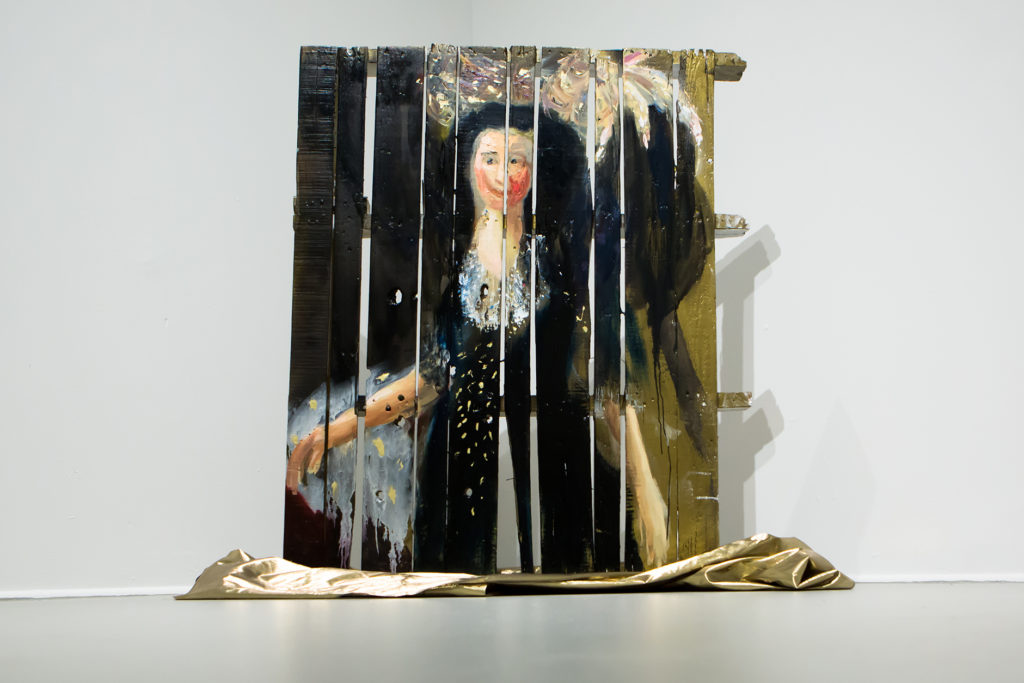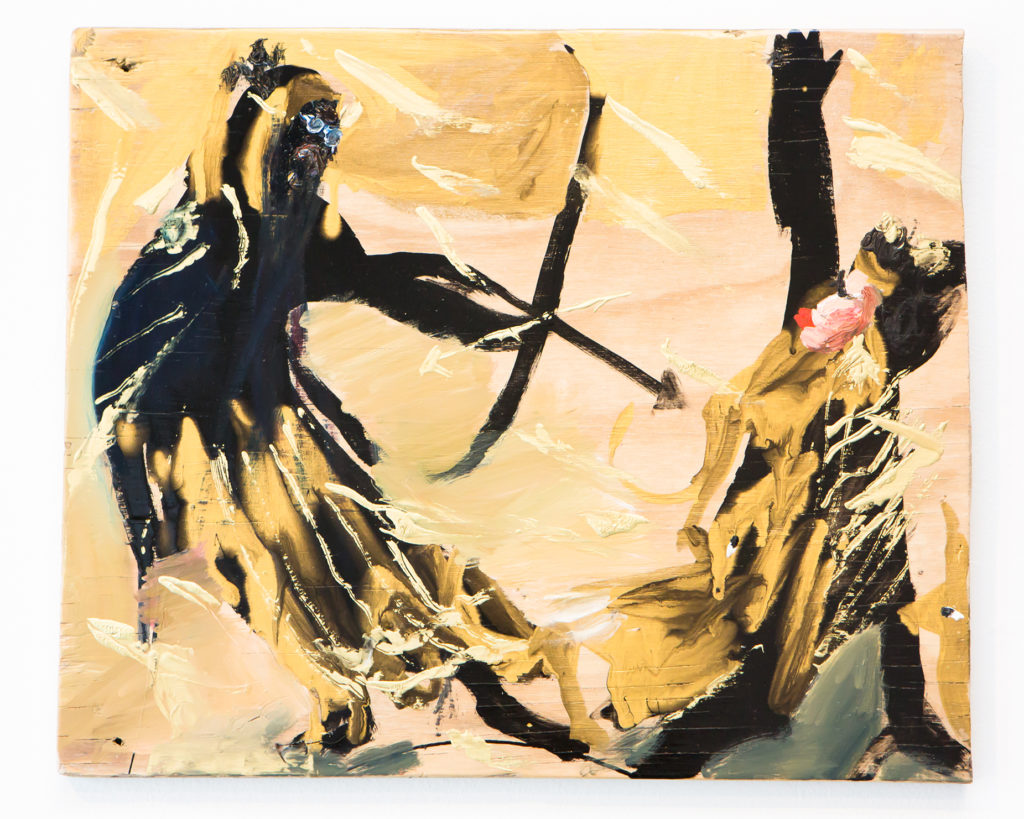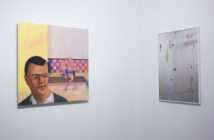Majas, cambujas y virreinacas by Alida Cervantes, currently on view at the Mills Gallery and curated by Candice Ivy, presents a series of works which integrate Mexico’s racially and socially charged colonial past with personal experiences and investigations of the complexities of crossing borders. The works in the exhibition are a continuation of Cervantes’s former body of work that explored the interracial tension of racial classification demonstrated in casta paintings created in the 18th century in Mexico (designed to keep the white people in power). Her first solo exhibition in the East Coast, the new body of work presented in Majas, cambujas y virreinacas confronts ideas of race, gender, power dynamics, and personal relationships. The work is autobiographical, but its use of materials and openness make it easy for an outsider to relate to the stories and concepts in Cervantes’ work.

Alida Cervantes: Majas, cambujas y virreinacas. Courtesy of the Boston Center for the Arts.
Photo: Melissa Blackall Photography
Sculptural paintings—some on dilapidated wood pieces and others on old palettes—focus on the energy of couples and intimate relationships. Even when there aren’t clear figures in the paintings, there is still a strong juxtaposition of elements colliding. The presence of each artwork—larger than life and powerful—leans on the walls, like soldiers staring at each viewer passing by—allowing us to enter into Cervantes’s story. My favorite work here is an assemblage of reclaimed graffiti panels rescued from a government building presenting a royal white woman next to what may be seen as her servant, a woman of color who attends to the royal figure who, in turn, gestures at an actual plant installed in the gallery in front of the painted panels. What makes this piece so powerful is the layers of class and value; the white woman painted on panels found on the street, the value change in the material, and the once undesirable materials now mounted in a fine art clean, stark gallery.

Alida Cervantes: Majas, cambujas y virreinacas. Courtesy of the Boston Center for the Arts.
Photo: Melissa Blackall Photography
The techniques and processes of Cervantes’s work seem urgent, almost fast and violent at times. Using spray paint, some images are created within minutes. But the impact these figures leave the viewer with is incredibly touching and powerful. This makes me wonder how the time spent creating a piece affects quality or value – raising questions towards gender and race in art, for example, how are women using “found” materials seen differently than men working with similar materials? Does using terms like “Mexican Artist”, “Mexican Art”, and “Female Mexican Artist” increase the value of the work? Or does it increase the reputation and image of gallery directors showing said ”artists"?
Inspired by her experience in crossing borders daily to her studio in Tijuana from San Diego, Cervantes investigates forms of power struggles relating to gender and race—bouncing from each place. Cervantes rescues scavenged materials from the streets of Tijuana, construction sites, and government buildings—confronting gender politics and postcolonial Mexico. “There’s a tension that happens with the figures in the paintings—something I am trying to figure out in my own relationships which comes from the way I was raised—the power structures in my home, raised in Tijuana, a white Mexican women—raised by nannies and servants—and then as a women involved with men of color,” says Cervantes. Working with formal painting and mounted of strong structure, Cervantes says: “I felt my presence was too imposing—I wanted to break that.”

Alida Cervantes: Majas, cambujas y virreinacas. Courtesy of the Boston Center for the Arts.
Photo: Melissa Blackall Photography
Alida Cervantes: Majas, cambujas y virreinacas is on view at the Mills Gallery at the Boston Center for the Arts through June 25, 2017.




